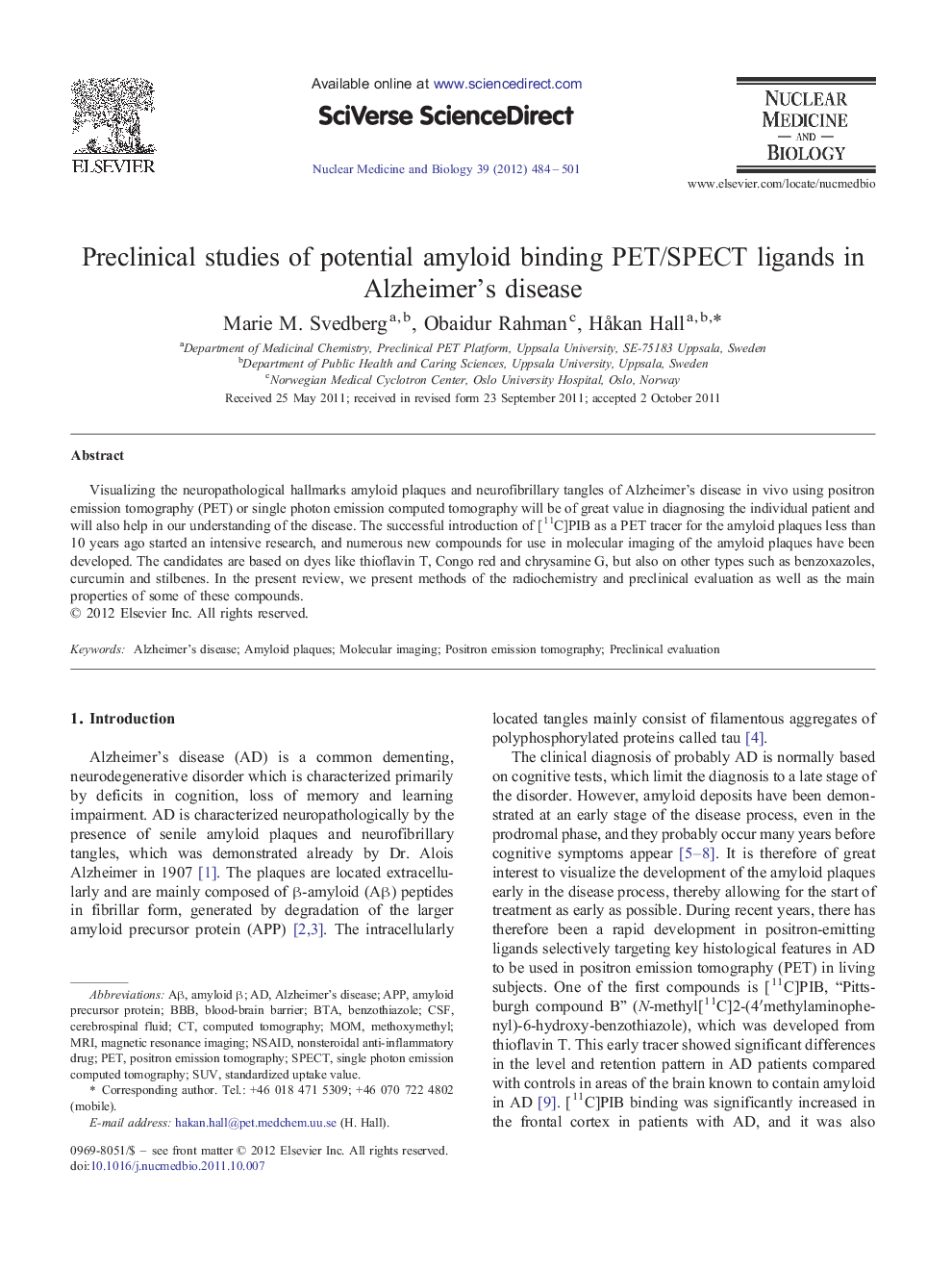| Article ID | Journal | Published Year | Pages | File Type |
|---|---|---|---|---|
| 2154139 | Nuclear Medicine and Biology | 2012 | 18 Pages |
Visualizing the neuropathological hallmarks amyloid plaques and neurofibrillary tangles of Alzheimer's disease in vivo using positron emission tomography (PET) or single photon emission computed tomography will be of great value in diagnosing the individual patient and will also help in our understanding of the disease. The successful introduction of [11C]PIB as a PET tracer for the amyloid plaques less than 10 years ago started an intensive research, and numerous new compounds for use in molecular imaging of the amyloid plaques have been developed. The candidates are based on dyes like thioflavin T, Congo red and chrysamine G, but also on other types such as benzoxazoles, curcumin and stilbenes. In the present review, we present methods of the radiochemistry and preclinical evaluation as well as the main properties of some of these compounds.
